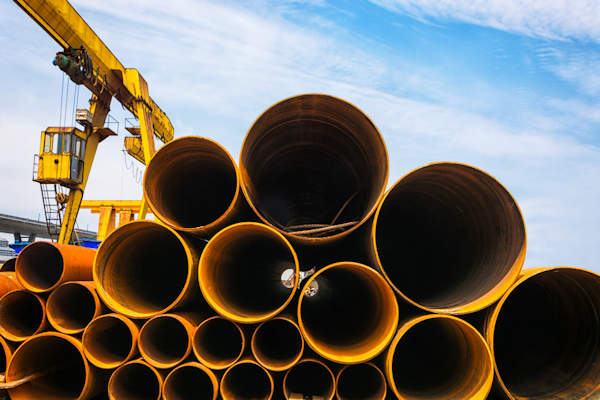The Benefits of Breakbulk over Containerization

While containerization has undeniably revolutionized the shipping industry, offering efficient, standardized, and streamlined shipping solutions, breakbulk remains indispensable in certain scenarios. Despite the prevalence of container shipping, there are specific contexts where breakbulk holds an advantage. In this article, we’ll delve into the benefits of breakbulk over containerization.
* Please send feedback/suggestions to editor @ shipuniverse.com
Pro tip: Breakbulk Americas is almost here! September 26 – 28!
1. Handling Oversized and Heavy Cargo
Container sizes, despite their variety, have limitations. Not all cargo can fit neatly into a 20-foot or 40-foot container. Heavy machinery, turbines, large vehicles, and construction equipment often exceed these dimensions. Breakbulk shipping offers the flexibility to transport these massive cargoes without the constraints of container dimensions.
2. Flexibility in Loading and Unloading
Breakbulk cargoes can be loaded and unloaded using cranes, ramps, or other specialized equipment tailored to the cargo’s specific needs. This flexibility can be especially advantageous at ports that might not have the infrastructure for container handling.
3. Less Repackaging Required
Certain goods might need extensive repackaging or disassembly to fit into containers. With breakbulk, many of these goods can be shipped in their original or minimally adjusted form, reducing the risk of damage and saving on repackaging costs.
4. Optimized for Certain Trade Routes
There are trade routes where breakbulk shipping remains more prevalent due to the nature of goods traded, port infrastructures, or specific demands of the region. In such scenarios, opting for breakbulk can be more time-efficient and cost-effective.
5. Reduced Transshipment
In routes where direct services are not available for container ships, containers might need to be transshipped through hub ports. This process can introduce delays and increase costs. Breakbulk vessels, often being more versatile, can potentially offer direct sailings, reducing the need for transshipments.
6. Tailored Stowage Plans
Every breakbulk shipment can have a stowage plan tailored to the specific cargo, ensuring optimal loading, safety, and space utilization. While containers offer standardized stowage, they might not be as efficient for irregular or varied cargo types on a single voyage.
7. Potential for Cost Savings
In specific scenarios, especially when shipping large volumes of bulk or oversized cargo, breakbulk can offer better freight rates. By optimizing space and minimizing the need for additional equipment like containers, shippers might find breakbulk to be more economical.
8. Personalized Attention to Cargo
Given the nature of breakbulk cargo, there’s often a higher level of attention and care during handling and stowage. This attention can be crucial for high-value or fragile cargoes that require special handling.
While containerization offers numerous advantages in standardization, efficiency, and global trade scalability, breakbulk shipping remains relevant and superior in specific contexts. The choice between breakbulk and containerization boils down to the nature of the cargo, the specific needs of the shipper, and the demands of the trade route. By understanding the distinct advantages of both methods, shippers can make informed decisions that best serve their logistical needs.

Do you have a Maritime Product or Service that may be of interest to Shipowners? Tell us about it here!
Do you have feedback or insights? Please reach out to editor @ shipuniverse.com



